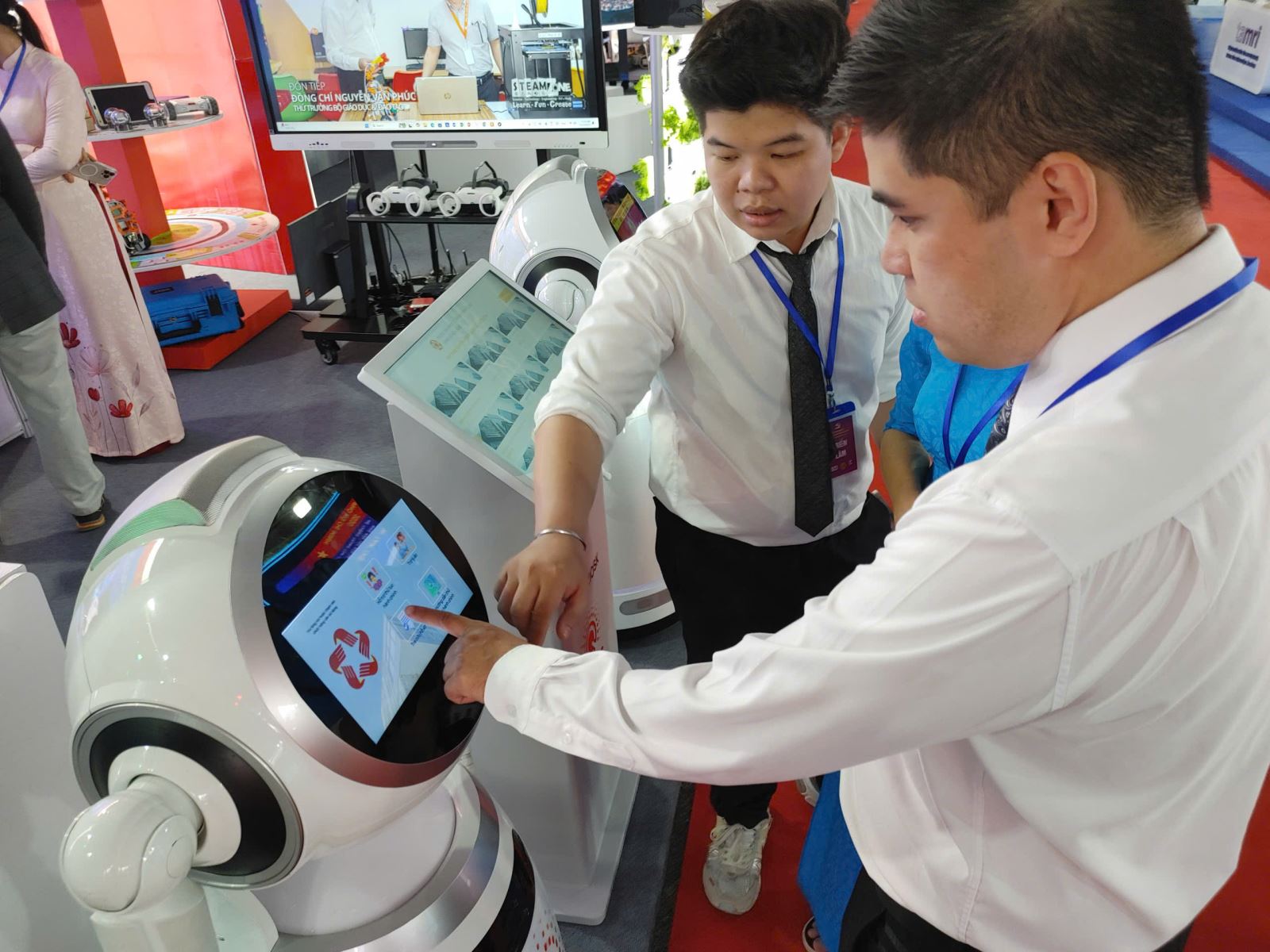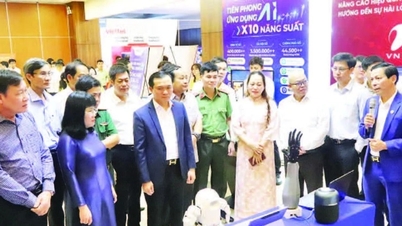
Technology has not reached businesses yet
Digital transformation in human resources has been mentioned as an inevitable trend for many years, but when implemented in practice, it faces many obstacles. In many companies, human resource management software is purchased, data systems are set up, but old working processes remain the same, causing work not only not to decrease but also to double.
At a company specializing in manufacturing auto parts in Tan Thuan Export Processing Zone ( Ho Chi Minh City), Ms. Minh Thy, the company's human resources manager, said that the company has had HRM software for three years, but all records still have to be saved in parallel on paper. Every month, the HR department has to process dozens of resignation records, new hires, probationary evaluations, timekeeping, benefits, etc., but the data entered on the software is only for "comparison", and the final decision is still based on paper.
“In the past, doing it manually was hard, but now with software, we still have to do it manually because we are afraid of making mistakes. So it is twice as hard,” added Ms. Minh Thy.
At Hanwan Company Limited in Tan Binh Ward, Ms. Nguyen Ha, an HR employee of this company, said that the business wanted to digitize but to save costs, they chose cheap software with limited functions, not connected to the timekeeping and payroll system, causing employees to have to manually enter data twice.
Besides, the company's leaders are still used to managing based on feelings, "like to look at faces to assign work", so the technology reports are just a formality. "The boss still believes in paperwork more than software, so the digital system is just for presentation," Ms. Ha shared.

Similarly, Mr. Nguyen Trong Dai, HR Director of Dai Thanh Paper Company, said that when transforming digitally, businesses face difficulties in recruiting experienced personnel. Although profiles on social networks and recruitment platforms are abundant, the information is not authentic.
“Many people have very good profiles and impressive titles, but when they start working, their actual capacity is only about 40%. It is also difficult to verify their previous workplace because companies often do not share personnel data with each other,” Mr. Trong Dai added.
According to a report by ABeam Consulting, although 68% of Vietnamese enterprises plan to invest in a human resource management system (HRIS), most of them still manage using Excel, with data scattered and lacking connections. This makes technology not play a supporting role but a burden. These stories show that the biggest problem is not the lack of technology but the fact that people have not changed the way they work, processes have not been restructured, data has not been standardized and leaders have not fully empowered the digital operating system.
Change your mindset to serve people
The issue of digital transformation in human resource management needs to be viewed from a strategic perspective. According to a World Bank report, 63% of Southeast Asian businesses have difficulty recruiting personnel with the right skills. Along with that, the job-hopping rate in Vietnam remains at 20-25% per year, highest among young personnel. This shows that retaining people is not only about salary or benefits, but also about the working environment, culture and career development mechanism.
To solve the problem of applying digital technology in human resource management, Ms. Van Hoang, representative of ABeam Consulting, also suggested that businesses can apply the HR Portfolio model. This is a model that considers people as investment assets. Instead of just storing records and evaluating KPIs, businesses only need to build a central data system on skills, capacity, training costs and succession planning. This is not software but a way to reorganize human resource management thinking.
Accordingly, some organizations in Vietnam have also shown effectiveness when using this model. For example, Techcombank applies human resource data to forecast capacity needs, thereby systematically planning succession and reducing the turnover rate of young employees by 30%. JUKI Vietnam Company deployed the "Smart Factory HR" program, standardizing data of 5,000 employees in real time with the SAP SuccessFactors system, helping to reduce errors and increase transparency in evaluation...

"The future of HR lies in the connection between people - data - strategy. HR people are no longer just file handlers, but leaders of change, using data to forecast human resource needs and develop teams," Ms. Hoang Van added.
From a state management perspective, Associate Professor Dr. Tran Van Minh, public administration expert, National Academy of Public Administration, believes that digital transformation is only effective when accompanied by process reform. If only software is added to the old process, it is no different from driving a car on a country road. Before digitizing, it is necessary to standardize the process, clearly define responsibilities, train users and especially create trust in data. Technology is just a means, people are the driving force. To effectively transform digitally, businesses should carry out digital transformation in stages, testing in one department, then expanding based on feedback and practical adjustments instead of implementing massively.
According to the Ho Chi Minh City Business Association, after the administrative boundary merger, many business and land registration files were delayed due to faulty public administration software, thin staff and unsynchronized operations. The rate of late files is up to 41%, showing that even the public sector, where digital transformation is strongly prioritized, cannot escape the situation of "software without people".
Therefore, digital transformation in human resource management is not a story of strong or weak software, but a story of reorganizing the way businesses manage people. Technology is only truly valuable when it helps reduce the burden, increase productivity and create a transparent working environment, instead of making everything more complicated. To successfully transform digitally, the first thing that needs to change is the mindset and trust in data.
Source: https://baotintuc.vn/van-de-quan-tam/chuyen-doi-so-nhan-su-nut-that-khong-nam-o-phan-mem-20251105163024460.htm


![[Photo] Prime Minister Pham Minh Chinh receives the delegation of the Semiconductor Manufacturing International (SEMI)](https://vphoto.vietnam.vn/thumb/1200x675/vietnam/resource/IMAGE/2025/11/06/1762434628831_dsc-0219-jpg.webp)
![[Photo] Closing of the 14th Conference of the 13th Party Central Committee](https://vphoto.vietnam.vn/thumb/1200x675/vietnam/resource/IMAGE/2025/11/06/1762404919012_a1-bnd-5975-5183-jpg.webp)



































































































Comment (0)